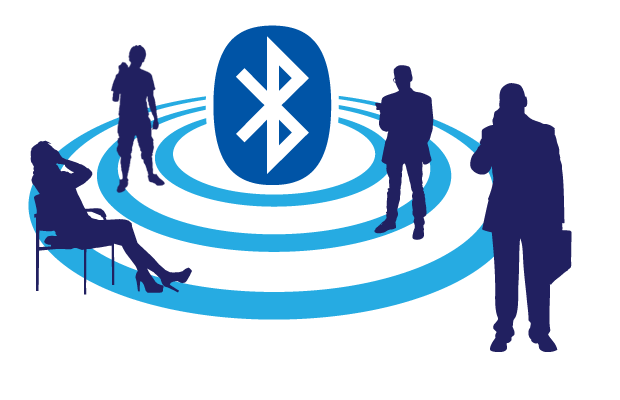
What causes cut outs and interference when using Bluetooth headphones?
Bluetooth headphones are a great piece of equipment to have when they are working properly; they allow us to multi-task in an age where we always need to do more than one task at a time. Bluetooth headphones are perfect for the car, in the gym or great to be used anywhere else but it is inevitable to have cut outs and interference at times, this can be quite frustrating.
Everything is easy when you know how and in this article we are going to explain to you what causes such problems, so you will be able to avoid them or at least minimize the impact of disconnections when using your Bluetooth headphones.
Common causes of Bluetooth interference
- Kitchen appliances- Using appliances such as a microwave near your Bluetooth headphones or Wi-Fi station can cause interference.
- DSS (Direct Satellite Service) -Coax cables and connectors that are used in some satellite dishes can cause disconnections. Damaged cables can also cause frequency interference so you may need to replace damaged cables and see if this fixes the problem.
- Power source- Power lines, railway tracks, and other nearby power stations can cause Bluetooth headphone disconnections. Locating a router or port near power lines or breaker boxes can cause interference issues also.
- Certain phones- i.e., 2.4 Ghz or 5 Ghz range phones will cause possible interference with your wireless devices and headphones when trying send or receive calls.
- RF Video (wireless) – Video transmitters that use 2.4 or 5 GHz can cause disconnections on your Bluetooth devices and Wi-Fi connections.
- Wireless audio speakers using a range of 2.4 GHz to 5 GHz can cause the same issues.
- Poorly covered or protected cable setups.
- Poorly shielded cabling on external hard drives can cause disconnections on wireless devices.
- Baby monitors, neighbours devices, wireless cameras can also cause connection issues.
Now that we have established what some of the biggest causes of disconnections are, let us have a look at the exact causes and how we can prevent them in further detail.
The two leading causes of interference with Bluetooth headphones are physical barriers or other devices using the same bandwidth.
For Bluetooth and Wi-Fi signals to work to their maximum capability you need to carefully place your devices and be vigilant about where you use them. Device locations and construction materials can play a massive role in how strong your signal will be. The more materials a signal has to go through the weaker, it generally will be.
Avoid barriers wherever possible to create a clear signal path between your headphones and other devices. Metal, wood, and even water can all create signal barriers when using your device so if you are using your headphones in your home, it is best to be in the same room as the device you are connecting to and be as close as possible.
Interference from the water in your body
You may not know this, but when using your Bluetooth headphones, you will get the best sound frequency and quality if you keep your device on the outside of your body along with your headphones. Water mars Bluetooth radio frequency strength and your body is made up of 70 percent water. Have you ever seen people in the gym or out on a run who have Bluetooth headphones and a device strapped to their arm or wrist? This is the reason why keeping your cell phone, I-pod or other devices in one trouser pocket and your Bluetooth headphones atop your head means the signals have to travel through water and will weaken your sound quality.
Many companies are trying to solve this issue by improving the power and frequency of Bluetooth radio waves.
Other people using devices near you
If you use your Bluetooth headset to make calls in your car or for outdoor exercising purposes you probably won’t be in close vicinity of other people using a Bluetooth connection. However, if you train in a gym, there is a high chance that other people will be using a similar device and you could cause disconnections between each other. Unfortunately, the only realistic way around this is to try and avoid training close to one another!
Fluorescent lighting
Does your home, gym, work or office space have new lighting? You may want to check if the lights are emitting signals within the 2.4 GHz spectrum. As we mentioned previously; this can cause problems with Wi-Fi and Bluetooth connections. Newer devices will have a technology to counteract this problem, but it is still something worth bearing in mind when troubleshooting disconnections with your Bluetooth headphones.
Final thoughts
Interference between your Bluetooth device and other appliances or obstructions should be minimal, but we have pointed out what to be aware of so you can maximise your Bluetooth experience wherever you are. Properly designed devices use relatively weak signals of around 1 MW, when comparing that to cell phones which use 3 milliwatts you can see it is quite a small signal.
Newer Bluetooth devices also use a technology called spread spectrum frequency hopping allowing the devices to switch between 70 different frequencies within their specific range. This changes at an impressive 1600 times per second so your chances of 2 devices sharing the same frequency should be minuscule. If it does happen it won’t be for very long either. New Bluetooth devices can also identify bad channels or ones already in use so they are avoided.
In-ear style headphones are more susceptible to disconnection issues than over-ear ones. This is because the size of antenna that can be installed into such a compact product is much smaller than in an over-ear headphone. If you suffer from disconnection issues with in-ear headphones, you might want to check out our fantastic Paww WaveSound 2 and Paww WaveSound 3 headphones.


